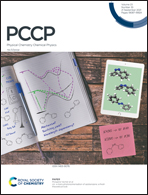Electrochemical Pourbaix diagrams of Mg–Zn alloys from first-principles calculations and experimental thermodynamic data†
Abstract
Mg–Zn alloys have attracted much attention as biodegradable alloys owing to their superior mechanical properties and excellent biocompatibility. However, their corrosion/degradation behaviour has become a major issue for various biomedical applications. To understand their corrosion behaviours in aqueous environments, the first-principles informed Pourbaix diagrams, that is, electrochemical phase diagrams with respect to electrode potential and solution pH, were constructed for Mg–Zn alloys and compared with experimental observations. It was found that for Mg-rich alloys, the MgZn phase has a higher potential than the Mg matrix and may act as a cathode, resulting in galvanic corrosion, while for Zn-rich alloys, the phase Mg2Zn11 corrodes first. In Zn-rich alloys, Mg(OH)2 preferably precipitates under alkaline conditions, thus hindering the increase in pH and preventing the release of dissolved ZnO22− ions. In a Cl-containing solution, the soluble ZnCl2 eases the corrosion of the Zn matrix by decreasing the corrosion potential. These results are supported by various experimental observations; thus, they provide an in-depth understanding of the degradation behaviour of various Mg–Zn alloys as well as a feasible pathway in the design of biocompatible Mg–Zn alloys with first-principles informed Pourbaix diagrams.



 Please wait while we load your content...
Please wait while we load your content...